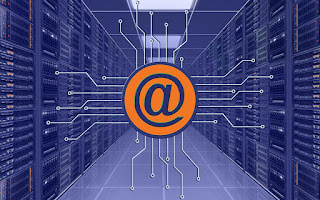Demystifying Email Servers: The Backbone of Digital Communication
In the digital age, email has become an indispensable tool for personal and professional communication, enabling individuals and organizations to exchange messages, documents, and multimedia content with ease. Behind the scenes of this seemingly simple process lies a complex network of servers, protocols, and technologies that power the seamless flow of emails. At the heart of this network is the email server, a critical component that plays a pivotal role in delivering, receiving, and storing electronic messages.
An email server, often referred to as a mail server, is a specialized computer system responsible for handling email operations, including sending, receiving, routing, and storing messages. Acting as a digital post office, the email server processes incoming and outgoing emails, ensuring their timely delivery to the intended recipients. Whether you're sending a quick message to a colleague or attaching a document to a client, the email server serves as the intermediary that facilitates the exchange of information across the vast expanse of the internet.
The functionality of an email server revolves around two primary protocols: Simple Mail Transfer Protocol (SMTP) and Post Office Protocol (POP) or Internet Message Access Protocol (IMAP). SMTP is responsible for sending outgoing emails from the sender's email client to the recipient's email server, while POP or IMAP governs the retrieval of incoming emails from the recipient's email server to their email client. Together, these protocols form the backbone of email communication, enabling messages to traverse the digital landscape seamlessly.
One of the key functions of an email server is to route emails to their intended destinations. When you compose an email and click "send," your email client communicates with your email server, which then forwards the message to the recipient's email server using SMTP. The recipient's email server, in turn, receives the incoming message and stores it temporarily until the recipient retrieves it using their email client. This intricate process of routing emails across different servers ensures reliable and efficient delivery, regardless of the geographic distance between sender and recipient.
In addition to routing emails, email servers also play a crucial role in spam filtering and virus scanning to protect users from malicious content and unwanted solicitations. By implementing robust security measures, such as content filtering, blacklisting, and heuristic analysis, email servers can identify and quarantine suspicious emails before they reach the recipient's inbox. This proactive approach helps safeguard users' privacy and security in an increasingly hostile digital environment.
Moreover, email servers are equipped with storage capabilities to store incoming emails until they are retrieved by the recipient. Depending on the email server configuration, messages may be stored locally on the server or forwarded to the recipient's email client for offline access. This storage functionality ensures that emails are accessible to users anytime, anywhere, even in the absence of an internet connection. Furthermore, email servers may offer features such as folder organization, message archiving, and search functionality to enhance user productivity and efficiency.
Email servers come in various forms, ranging from on-premises solutions deployed within an organization's infrastructure to cloud-based services hosted by third-party providers. On-premises email servers offer greater control and customization options but require dedicated hardware, maintenance, and IT expertise to manage effectively. In contrast, cloud-based email servers, such as Microsoft Exchange Online and Google Workspace, offer scalability, reliability, and convenience, with the provider handling infrastructure maintenance and updates. Choosing the right email server solution depends on factors such as budget, security requirements, scalability, and regulatory compliance.
Despite the ubiquity of email servers, they are not immune to challenges and vulnerabilities. Email server downtime, network congestion, hardware failures, and cyberattacks can disrupt email communication and compromise data integrity. To mitigate these risks, organizations must implement robust backup and disaster recovery strategies, as well as proactive monitoring and maintenance practices, to ensure the continuous operation of their email infrastructure. Additionally, staying abreast of emerging threats and security best practices is essential for safeguarding sensitive information and maintaining user trust email for team.
In conclusion, email servers are the unsung heroes of modern communication, powering the exchange of electronic messages across the digital landscape. From routing emails to filtering spam, email servers perform a myriad of functions behind the scenes to ensure the reliability, security, and efficiency of email communication. As the backbone of digital communication, email servers play a vital role in connecting individuals, businesses, and communities worldwide, facilitating collaboration, innovation, and progress.
So, the next time you hit "send" on an email, take a moment to appreciate the intricate network of email servers working tirelessly to deliver your message to its intended recipient—it's a testament to the remarkable power of technology to bring people together, one email at a time.




Comments
Post a Comment